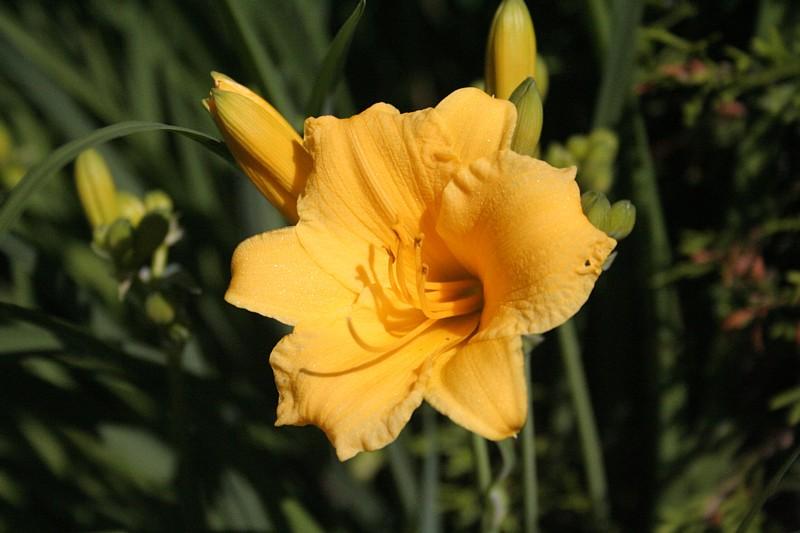
⇍ June 19th, 2005 ⇏

I'm sorry I'm not very good at identifying flowers yet... but I will try my best. Ahem. This is an exquisite example of a yellow flower that one might find if they happened to be walking from the side door of my house to a car parked in my driveway. If you look closely, you can still see morning dew glistening on the petals.
It occurred to me this morning that I haven't really tried to take any closeup flower pictures since my adventures at science camp. So, I quickly snapped this photo on the way to work this morning. It didn't turn out too bad considering that I was half asleep, and I just used my zoom lens.
This is a 1/4000s exposure at ISO 1600, f/5.6, 55mm focal length. The proof that I was half asleep is the fact that I forgot my camera had been set to ISO 1600 for the party. It is completely insane to use that speed outside with direct illumination from the sun... oh well.
sorry for the late comment... but why is it "completely insane" to use ISO 1600 outside?-- aaron
With a film camera, you want to stay away from ISO 1600 because faster film tends to be more grainy. It is really only useful for sporting events where shutter speeds need to be as fast as possible. Even the best digital cameras these days have noise problems at ISO 1600. The Digital Rebel XT, for example, applies a boost to the signal recorded by the CMOS imaging chip and all speeds above ISO 200 (well, it is a bit more complicated than that...), so shooting at ISO 1600 is like boosting the noise by a factor of eight. At that rate you will start to notice artifacts. (For an extreme example, you may recall the picture I posted on December 12th, 2004... maybe this winter I will try to shoot that picture again with my new camera). In general to get the best results possible with my camera I should try to shoot at ISO 200. For my party, I bumped it up to ISO 1600 and used a -1 exposure compensation -- which meant I was shooting at the equivalent of ISO 3200 -- because I wanted to shoot a dark room without a flash. In direct sunlight there is no need to go to such extreme measures. ;)-- Michael
so is shooting at ISO 800 with a -1 exposure compensation the exact same as ISO 1600? is this exposure compensation strictly a digital feature? and why did the photo turn out so well if the signal was boosted so much? there must've been some automatic correction somewhere... either that or it was very dark outisde?-- aaron
It would be the same if you then took the resulting image and boosted it by +1 in the software. This is really an abuse of exposure compensation though. Usually it is used for metering purposes. For example, sometimes I shoot everything with -1 EC because the in-camera metering system sometimes overexposes things. If I deliberately underexpose everything, then in the event that the camera screws up I will still be able to salvage the image. Note that I can only really salvage the image if I'm shooting in RAW mode, because then I have the full 12 bit image data to work with and I can bring forward underexposed areas. Overexposed areas are lost forever. The photo turned out well because the exposure time was so short, so there wasn't much time for CMOS noise to build up. Also, the Rebel XT has some pretty fancy built-in noise correction software, so any noise that was generated in that 1/4000th of a second was probably filtered out. The CMOS noise is way more noticeable in last week's photo, because the exposure time was much longer.-- Michael
Hosted by theorem.ca